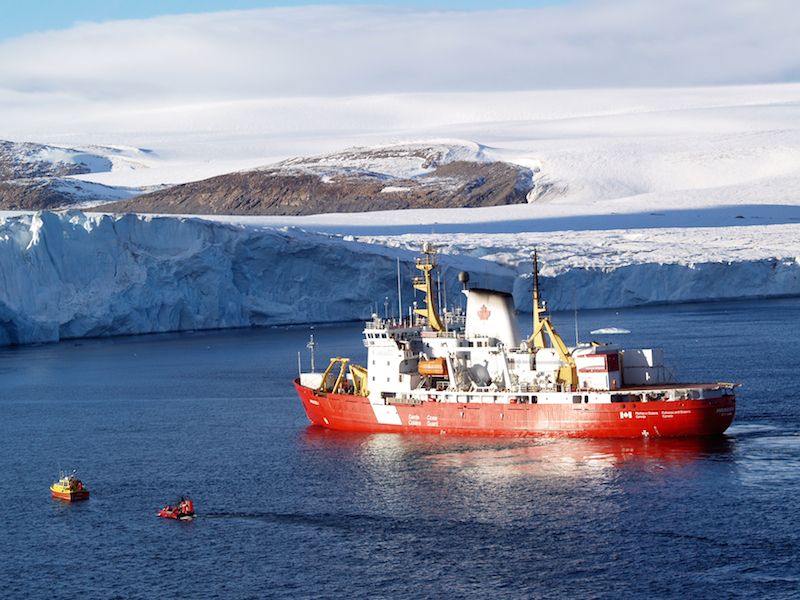
The research icebreaker CCGS Amundsen.
Uphere: The Big Spill – What do you get when you mix oil and Arctic water?
As Uphere Magazine reports in its April 2017 edition:
Question: Can natural bacteria help clean up after an oil spill in the Arctic?
The study: Researchers will seek out hydrocarbon-eating bacteria in major Arctic shipping corridors with the hope of developing an oil spill response plan.
There’s very little known about how an oil spill would play out in icy, unpredictable Arctic currents and few people would support even a controlled spill to test the outcome. But as the sea ice recedes and these waters open to longer, busier shipping seasons, the risk of an oil spill is growing. As a result, a partnership between the universities of Calgary and Manitoba is putting oil spill first-responders to the test. No, not the coast guard, with its icebreakers and 22 shipping containers packed with minor spill-control equipment spread across the Arctic. They’re looking instead at micro-organisms that occur naturally in Arctic waters.
In areas like the Gulf of Mexico that have seen major oil spills, a few clean-up methods have been tested: dispersants are often used to break the oil down into droplets, preventing large slicks from coating the land and some sea mammals, but this also spreads the particles further and drops them to the seafloor. Another method uses booms to contain the spill, while sponges, vacuums or absorbent ropes skim the water and lift off the oil at the surface.
There is also a natural process in which microorganisms already in the water biodegrade the spilled hydrocarbons. This is called microbial bioremediation, and whether it takes place in Arctic conditions—and to what extent—is what Gary Stern and his team are looking to find out. Stern is a professor in the University of Manitoba’s Centre for Earth Observation Science and a lead on the project, alongside University of Calgary professor in microbiology Casey Hubert. Their $10.7-million project GENICE is just starting up, with its first field season beginning this June in Hudson Bay aboard the CCGS Amundsen.
Read the full story here.
Research at the University of Manitoba is partially supported by funding from the Government of Canada Research Support Fund.






